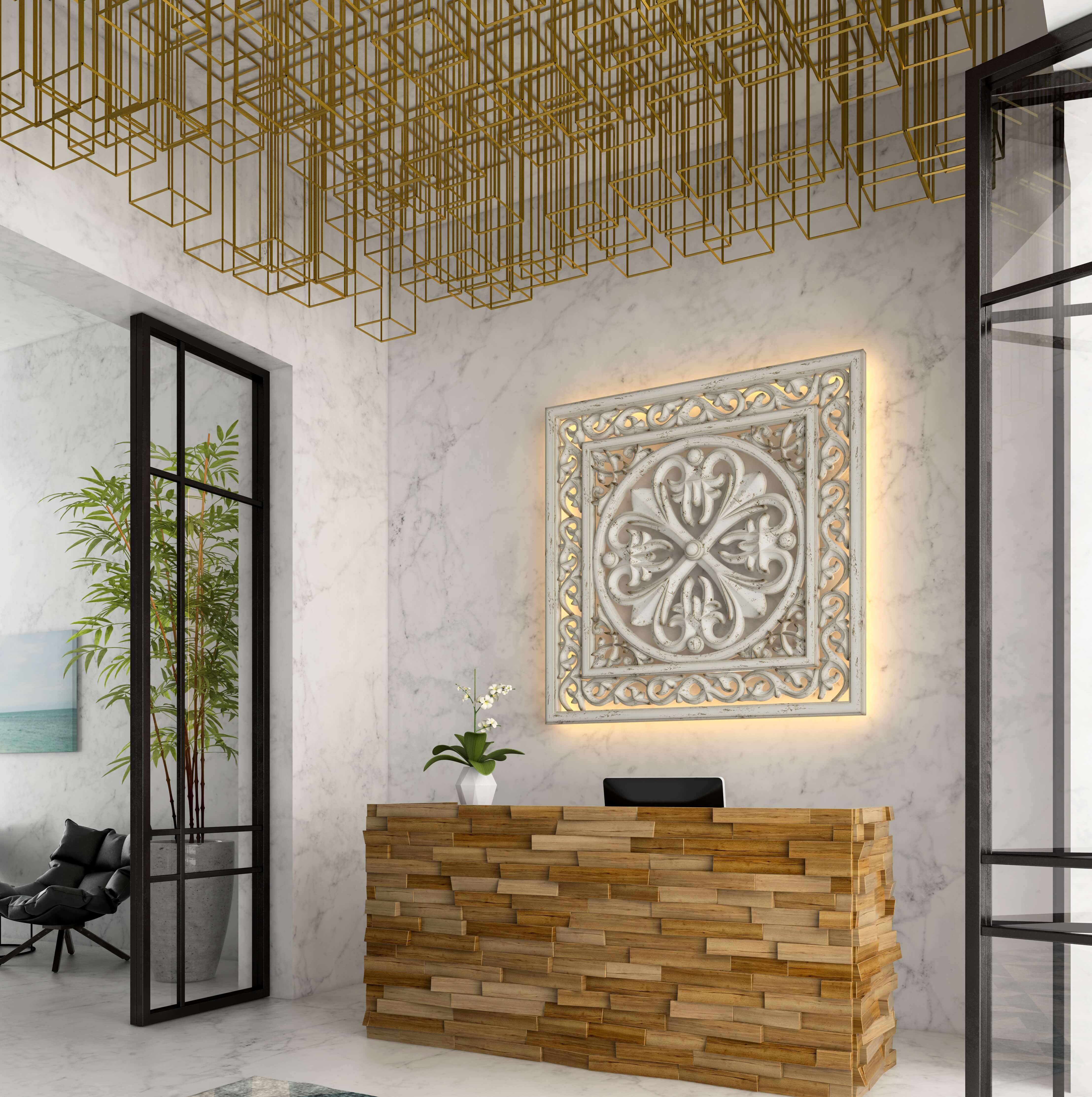Interior design is not just about making a space beautiful or functional. There is a science to wellness-based design. Utilizing a wellness-based design approach will attract more clients and help you and your employees be more productive and happier. If you are a wellness practitioner, does your wellness office provide a supportive, safe, nurturing environment that your customers will want to visit? Here are some expert tips on how you can get started to create a specialized space for your practice.
Relax with Nature
During the workday, people experience fatigue, and your waiting room can be a restorative space to rejuvenate both your clients and employees. Natural patterns, materials, and colors, along with plants and natural light have been linked to a multitude of health benefits, including decreased blood pressure, increased attention, and increased psychological well-being. As we spend more time indoors now than ever before, people crave natural light and ventilation. Exposure to natural light has been proved to have a substantial impact on mood, circadian heath, and productivity. Consider adding openings that can illuminate your wellness space.
Keep Things Clean
Patients visiting your office can unknowingly track germs and other harmful contaminants indoors. Adding an entryway composed of grilles and grates will reduce the amount of toxins brought indoors. Utilizing a design with slots will also allow for easy cleaning. High touch surfaces such as counters or light switches can also harbor a high number of pathogens. Reduce these impacts by replacing materials on these surfaces with non-porous materials or coated with a material that is abrasion-resistant and non-leaching and meets requirements for antimicrobials. If you offer drinking water to clients and employees, regularly treat water sources with an activated carbon filter to remove organic chemicals and a sediment filter to remove suspended solids.
Get the top stories in your inbox by signing up for our daily newsletter, Indy Today.
Combating Toxic Materials
Many toxic chemicals are used in the fabrication of building materials, furniture and decor, and their off-gassing is associated with numerous ailments. Replace them with materials that meet the following criteria: Living Product Challenge label; Material Health Certificate from the Cradle-to-Cradle Products Innovation Institute; and have no substances over 1,000 ppm, as verified by a qualified PhD toxicologist or Certified Industrial Hygienist. Painting over your existing walls or furniture with nontoxic primer and paint will keep harmful chemicals at bay.
Ventilation
Proper ventilation is crucial for ensuring that your space is healthy and nurturing for anyone who enters it. Adding plants and filtration systems can help by counteracting toxic chemicals, as well as by decreasing combustion byproducts, airborne particulate matter, bacteria, and mold spores. Buildings in high traffic or manufacturing areas have higher counts of chemicals and should consider adding a carbon filtration or air-sanitizing system. Beware of exhaust from bathrooms, janitorial closets, and chemical storage areas circulating through your building and have self-closing doors on those spaces to keep them isolated.
Keep a Calm Environment
A primary element of mindfulness and wellness is peace. In order to truly nurture your clients’ and employees’ wellness, noisy equipment should be separated from client areas. Walls with appropriate insulation and construction will help mitigate sound transmission between rooms. Doors can be fitted with gaskets, sweeps, and solid core for further noise reduction.
High ceilings are a gorgeous design feature that often come with the unfortunate increase in indoor noise levels. Acoustical ceiling “clouds,” baffles, and sound masking systems will allow you to reduce unwanted noise while still appreciating the architectural design of your space. A completely silent space can be just as distracting as a loud one, so it is important to find a healthy balance.
Elisa Garcia, AIA, is a Santa Barbara native and the founder of Zen Spaces. She can be reached at elisa@zenspaces.design. Architecturally Speaking is written by members of the American Institute of Architects’ Santa Barbara chapter.
Every day, the staff of the Santa Barbara Independent works hard to sort out truth from rumor and keep you informed of what’s happening across the entire Santa Barbara community. Now there’s a way to directly enable these efforts. Support the Independent by making a direct contribution or with a subscription to Indy+.




